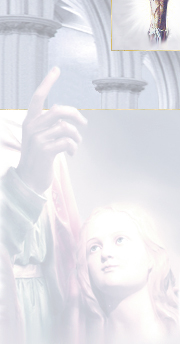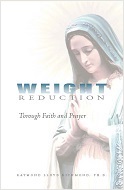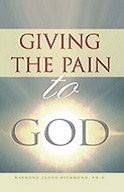|
|
|
Reverence for the Mass |
Spiritual Counsels |
Books |
About CSF
Origin of the Holy
Way of the Cross |
Preface |
The Stations of the Cross |
Personal Meditation |
Mary’s “Holy Way of the
Cross” Near Ephesus
Origin of the Holy Way
of the Cross
Excerpted from Anne Catherine Emmerich
The Life of Jesus Christ Volume IV, THE EVE OF THE HOLY RESURRECTION
It was about eleven oíclock at night when the
Blessed Virgin, moved by love and ardent
desire, could no longer remain in the house. She rose, wrapped herself in a gray mantle,
and went out alone. I saw her going sadly to the house of Caiaphas and then to Pilateís
palace, which was a long way back into the city. And thus she traversed alone the whole
way passed over by Jesus bearing His cross. She went through the deserted streets and
paused at every spot upon which some special suffering or outrage had befallen the Lord.
She frequently knelt down, felt around on the stones with her hand, and touched her lips
to them, as if reverently touching and kissing something sacred, namely, the blood of Jesus.
She beheld around her everything sanctified by contact with Jesus bright and shining, and
her soul was entirely lost in love and adoration.
Preface
In her visions, the Venerable Anne Catherine
Emmerich saw that the Blessed Virgin walked the actual Holy Way of the Cross in Jerusalem
during the Passion and the Crucifixion, and that after the Ascension, while living in Ephesus,
she erected Stations of the Cross near her house and walked them prayerfully. Today it is
fitting that we, too, remember the Stations on the Holy Way of the Cross as frequently as
possible.
Note that the number of Stations which follow are more than the traditional Stations of the
Cross and are taken from the detailed visions of the Passion as described in
The Life of Jesus Christ by the Venerable Anne Catherine Emmerich.
Moreover, because the Holy Way of the Cross began in the Garden of Gethsemane on the Mount of
Olives, and because the Ascension occurred at the top of the same Mount of Olives, let us
remember in prayer the entire Holy Way of the Cross, from the agony in the Garden of Gethsemane
to the wonderful Ascension. This should remind us that the Holy Way of the Cross does not end in
sorrow and death but actually culminates in great hope.
The Stations
of the Cross
Unlike the Stations
of the Cross prayed in a church, this private daily devotion has no specific rules. Say
whatever prayers you would like at each Station, or just recite the Stations in silent
remembrance.
The Agony in the Garden

The Betrayal and Arrest

The Brutal Procession to the City

The Accusations at the Palace of Annas

The Court of Caiaphas, the Mockery, and the Imprisonment

The Morning Trial by the Members of the Council

The Accusations Before Pilate

The Questioning by Herod at his Palace

The Scourging, the Mockery, and the Crowning with Thorns at Pilateís Palace

The Condemnation to Death

The Carrying of the Cross

The First Fall

The Sorrow of Mary at the Sight of Jesus Silently Enduring the Hate and the Insults

The Second Fall

The Third Fall and the Help from Simon of Cyrene in Carrying the Cross

The Wiping of Jesusí Face by Veronica

The Fourth and Fifth Falls and the Weeping Women of Jerusalem

The Stumbling Climb up Mount Calvary

The Temporary Imprisonment in Preparation for the Execution

The Ruthless Removal of Jesusí Garments

The Nailing to the Cross

The Suffering and Death on the Cross

The Body of Jesus Taken Down from the Cross and Embraced by Mary

The Entombment

The Glorious Resurrection

The Wonderful Ascension
Personal Meditation
Whenever I suffer, I will say, “I
can endure this gracefully, for all the times Jesus has suffered.”
Whenever I am forgotten, I will say, “I
can endure this gracefully, for all the times I or others have forgotten Jesus.”
Whenever I am betrayed, I will say, “I
can endure this gracefully, for all the times I or others have betrayed Jesus.”
Whenever I am abused, I will say, “I
can endure this gracefully, for all the times I or others have abused Jesus.”
Whenever I am slandered, I will say, “I
can endure this gracefully, for all the times I or others have slandered Jesus.”
Whenever I am scorned, I will say, “I
can endure this gracefully, for all the times I or others have scorned Jesus.”
Whenever I am disbelieved, I will say, “I
can endure this gracefully, for all the times I or others have disbelieved Jesus.”
Whenever I am rejected, I will say, “I
can endure this gracefully, for all the times I or others have rejected Jesus.”
Whenever I am ridiculed, I will say, “I
can endure this gracefully, for all the times I or others have ridiculed Jesus.”
Whenever I am insulted, I will say, “I
can endure this gracefully, for all the times I or others have insulted Jesus.”
Whenever I am hated, I will say, “I
can endure this gracefully, for all the times I or others have hated Jesus.”
Whenever I am cursed, I will say, “I
can endure this gracefully, for all the times I or others have cursed Jesus.”
Mary’s “Holy Way of the
Cross” Near Ephesus
Excerpted from Anne Catherine Emmerich
The Life of Jesus Christ Volume IV, THE LIFE OF MARY AFTER CHRISTíS ASCENSION, 2
In the neighborhood of her dwelling, the Blessed
Virgin had herself erected the Stations of the Holy Way of the Cross. I saw her at first
going alone and measuring off all the special points of the bitter Passion according to the
number of steps which, after the death of her Son, she had so often counted. At the end of
each definite number, she raised a memorial stone in remembrance of the special suffering
there endured by her Divine Son. The way led to a grove, and there was the Holy Sepulcher
represented by a cave in the side of a hill. After all the Stations were definitively marked,
the Blessed Virgin made the Holy Way with her maid in silent meditation. When they reached a
Station, they sat down, meditated upon the mystery and its signification, and prayed. By
degrees, the whole route was improved and more beautifully arranged. John gave orders for
regular monuments to be set up.


Healing
|
Though
Demons
Gloat
|
Anger
&
Forgiveness
|
Falling
Families,
Fallen Children
|
Disasters
and
trauma
|
Psychology
from the
Heart
|
 |
 |
 |
 |
 |
 |
Psychological Healing
in the Catholic Mystic tradition |
True Christian
Identity
In Confronting
Evil |
How to Turn the
Emotional Wounds
of Daily Life Into
Psychological Growth. |
The Psychological
and
Spiritual Remedy
For Our Cultural
Disintegration |
The Struggle For
Psychological
and Spiritual
Growth |
Collected Texts
About the Spiritual Depth of
Clinical Psychology |
More information |
More information |
More information |
More information |
More information |
More information |
Desire
and
Distraction
|
Fear
|
Stopping
Smoking
|
Borderline
Personality
Disorder
|
Catholic
Compassion
|
Reverence
for the
Holy Eucharist
|
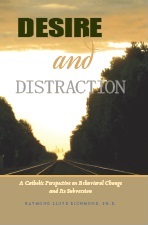 |
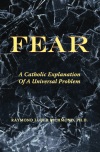 |
 |
 |
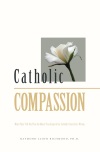 |
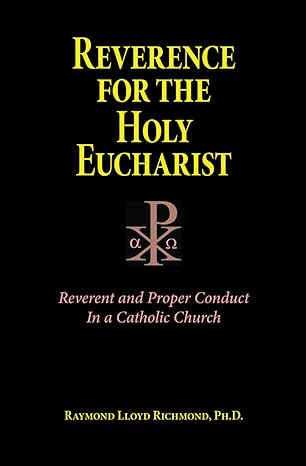 |
A Catholic Perspective
On Behavioral Change
and Its Subversion |
A Catholic Explanation
Of a Universal
Problem |
Through
Faith
and
Prayer |
Healing
the
Rage |
When They Tell You
That the Moral Teachings of the
Catholic Church
Are Wrong |
Reverent and
Proper Conduct in
a Catholic Church |
More information |
More information |
More information |
More information |
More information |
More information |
|


